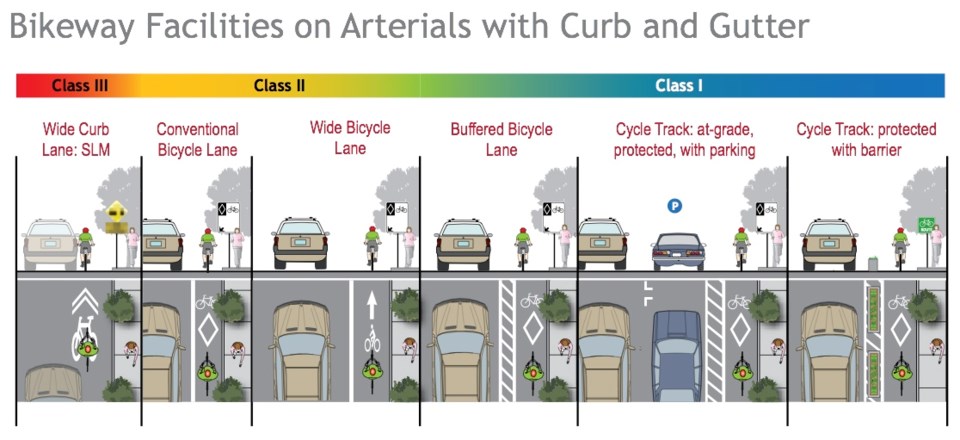I appreciate the new bike lanes being installed in front of my house, but every time I look at them, I want to run out yelling: “Stop, you’re doing it wrong!”
Don’t get me wrong -- I’m glad that they’re being put in. And I’m glad that there is a half-metre buffer zone between the bike lane and the vehicle lane along some stretches of the Pandora-Begbie-Johnson addition.
But, if I'm being honest, it seems like a bit of a wasted effort, to put in something that isn't as good or effective as it could be.
The lanes, , are part of the city's , crafted in 1995 and meant to be implemented by 2010.
Bike lanes may not be necessary for experienced riders, the plan says, but will help encourage intermediate and novice riders.
This diagram, taken from the Capital Regional District's, gives an idea of what different kinds of lane setups look like, and what kind of cyclists feel comfortable in each one. (Class III is experienced [vehicular] cyclists, Class I is everyone):

As the Greater Victoria Cycling Coalition , current best practices would separate cyclists from traffic completely, more like what you see in the far right of the diagrams.
Simply switching the position of the bike lane and the parking -- putting cyclists between parked cars and the curb, away from moving vehicles -- would provide cyclists extra protection and make the lanes something that any new cyclist would feel comfortable using.
It's a design used for at least five years in North America, and one that generally wouldn’t take much to implement.
The GVCC also recommends highlighting intersection conflict zones with green pavement and routing bikes around bus stops.
I hope that the looking at cycling in the city -- Mayor Dean Fortin and councillors Marianne Alto and Ben Isitt -- will push for more up-to-date ideas when the plan is revamped.


